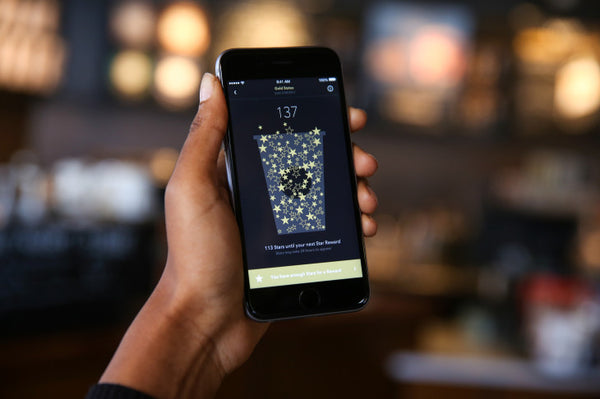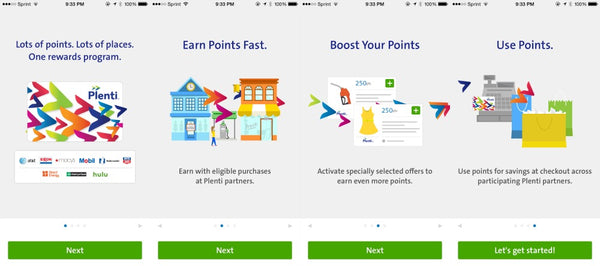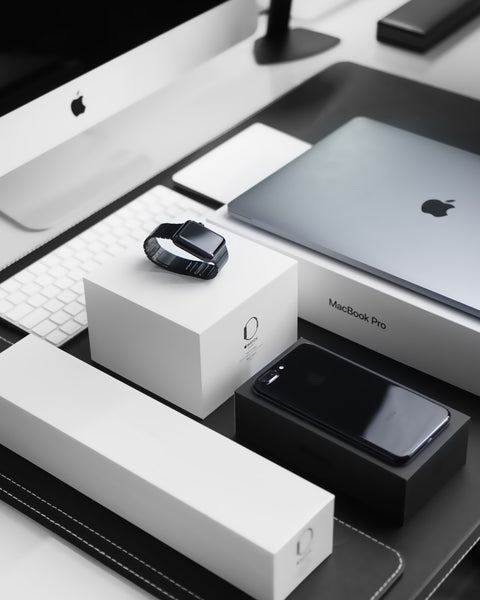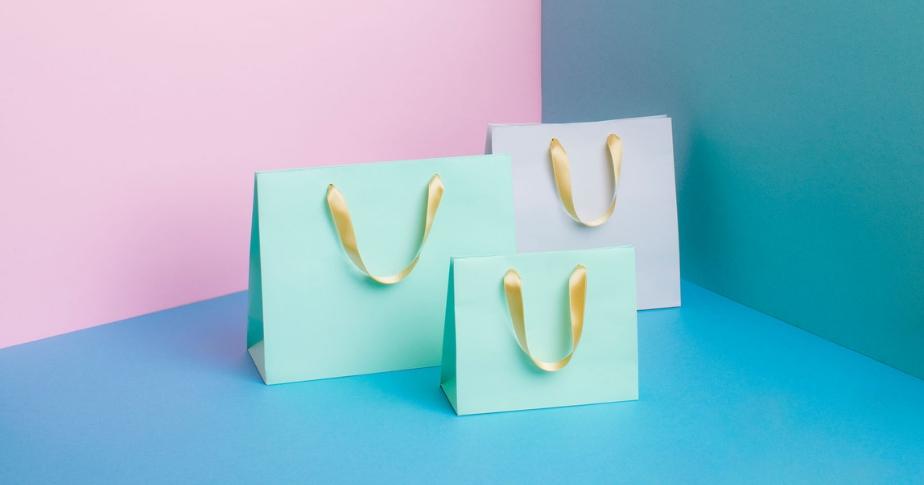In the retailer's marketing toolkit, loyalty programs have proven themselves as one of the most effective tactics for increasing revenue and inspiring customer loyalty. As many as 84% of consumers say they’re more apt to stick with a brand that offers a loyalty program. And 66% of customers say the ability to earn rewards actually changes their spending behavior.
We know that it costs a lot less to sell to existing customers than acquire new ones—that’s why brands invest in loyalty and rewards programs.
While they can be so effective, customer loyalty programs are nothing new. Most fall into one of four categories: points, tiers, social media, and paid programs. That’s why some retailers are looking to shake things up and find innovative new ways to build rewards programs and inspire customer loyalty.
Here are our 10 picks for the most innovative customer loyalty programs, and what you can learn from each.
Find an app on the Shopify App Store to help you create your first customer loyalty program.
1. DSW

Designer Shoe Warehouse (or DSW) has long run a traditional loyalty program that rewards customers with points for each purchase and includes tiers of rewards that customers can unlock as they spend more. Their program runs seamlessly. There’s no punch card that customers have to remember—rather, their online system recognizes customers by their name, phone number, or payment information.
The danger, when rewards become automatic, is that customers forget about the program. Customers who forget about the loyalty program aren’t enticed to spend more to earn more. DSW needed a way to keep customers engaged with the program and remind them where they stood and what they could earn by spending more at DSW stores.
In early 2017, DSW launched an email campaign aimed at reminding customers about their program. The campaign consisted of a personalized email detailing:
- How many points they needed to get their next $10 off certificate
- Deals they’re currently eligible for
- A snapshot of their interactions with the brand, including how long they’ve been a loyalty member, how many points they’ve earned, and how much they’ve saved in the past two years.
What made the campaign so successful was the level of personalization. A loyalty program like DSW’s gives the brand access to tons of customer data. DSW used that to their advantage (along with some trusty email automation) to build emails that are hyper-personalized and relevant—a far cry from other generic marketing emails sitting in customers’ inboxes.
2. Sephora Beauty Insider

Sephora’s Beauty Insider rewards program is wildly popular. The program boasts more than 17 million loyal members, and members make up as much as 80% of Sephora’s annual sales. Customers earn rewards for each purchase based on a traditional point system. The innovative part is that members can choose how to use their reward points.
One of the biggest barriers for a large swath of Sephora customers is price—Sephora products aren’t cheap. Beauty Insider members can redeem their rewards points for things like gift cards and discounts, helping to offset purchase prices without devaluing the products. Loyalty members can also redeem points for more exclusive things like limited edition products or in-store beauty tutorials.
Giving loyalty members the flexibility to choose enables Sephora to offer customers the deals and products they really want without cheapening the perceived value of their products.
3. Starbucks Rewards

It’s common now for retailers to create a mobile app to manage loyalty programs, but when Starbucks first launched My Starbucks Rewards through the Starbucks app, it was a new idea. Running the program through their app makes it radically easy for customers—no punch card to forget or lose, no sign-in required.
In order to earn loyalty points (or stars, in their case), customers must order or pay with the Starbucks app. Centralizing customer transactions this way creates a goldmine of data on customer preferences and behavior.
Go-to drink orders, customer lifetime value, frequently visited locations, seasonal favorites… by shepherding customers toward the app, Starbucks can gather information on all of these habits and more—empowering them to offer more relevant perks and communication to customers.
If a loyalty app is doable for your store, it can be a great way to collect and centralize customer data. Otherwise, a capable point-of-sale system can help you collect most of the same information.
4. Tarte <3 Rewards

Cosmetic and skincare retailer Tarte turned to their loyalty program as a way to boost social media engagement and user-generated content.
In the beauty industry, consumers are increasingly turning to user-generated content (like video makeup tutorials and selfies) to help them make buying decisions. Tarte capitalizes on this trend by incentivizing user-generated content and social media engagement. Customers can earn rewards points for activities like posting a selfie with Tarte products, writing online reviews, and video tutorials—transforming them into brand advocates.
Tarte’s program shows us that your loyalty program can incentivize almost any behavior you want from customers. It doesn’t have to be limited to encouraging them to spend more. That means customers can maintain their point-earning momentum in between purchases, and you can build brand awareness and authority.
5. Amazon Prime

Amazon is well-known for their Prime membership program. For a flat annual fee, Prime members get access to unlimited free two-day shipping on millions of items, as well as other perks Amazon has added like their streaming service and Prime Day sales.
Amazon deals with heavy competition from other retailers like Walmart. You can find most of the products on Amazon elsewhere, too. Prime is how they differentiate themselves and convince customers to buy products through Amazon exclusively. And it works—Prime members spend an average of four times more than other Amazon customers.
For retailers in similar industries where products and price points are very similar across competitors, your loyalty program can become a differentiator and competitive advantage.
Think of wholesale clubs like Costco. Give customers a reason to shop exclusively with you by offering value in addition to your products and service. By charging a membership fee, you can give yourself some wiggle room to offer truly valuable perks. An upfront investment also encourages consumers to validate their purchase by spending more with you.
6. The North Face

Apparel and outdoor gear retailer The North Face incentivizes loyalty members to earn more and more rewards by offering flexibility in how they’re redeemed—with options tailored to match their customers’ lifestyles.
Customers earn points with the VIPeak program in the traditional way, on every purchase, and in some unique ways like attending The North Face events, checking in at certain locations, and downloading The North Face app. When it comes time to redeem rewards, customers can use points toward unique travel experiences, like a mountain climbing adventure in Nepal.
More than simply encouraging customers to spend more, The North Face’s rewards speak directly to their target consumer. They aren’t generic discounts on products—they’re curated experiences that help to build a stronger connection between consumer and brand.
While sponsoring a hiking trip in Alaska may be outside your means as a small retailer, you can still create a loyalty and reward program that’s designed with your customers in mind, and helps strengthen the bond between you.
7. TOMS One for One

Speaking of customizing loyalty programs for your unique customers, TOMS has used their customer loyalty program to make a real difference on a global scale. Not every loyalty program has to fall into one of the four categories. It doesn’t even have to offer a monetary incentive in exchange for customer purchases and loyalty.
TOMS doesn’t give customers a loyalty card or offer rewards for every purchase. Instead, they appeal to their customers’ values and sense of worth. With every purchase, customers earn the non-monetary incentive of creating change through various initiatives like the One For One shoe donation and profit-sharing with causes like the Wildlife Conservation Society.
TOMS loyalty program defies expectations with its effectiveness. That’s because of the opportunity they discovered where a deep understanding of their customers intersects with a supersaturated market. TOMS channels their customers’ desire to do more with their dollar into a differentiating factor, setting them apart in the crowded footwear industry.
8. Plenti Rewards

American Express launched Plenti Rewards as a way to simplify loyalty for customers and drive even more value without the hassle. Plenti creates more value by opening up the places customers can both earn and redeem loyalty points.
Customers earn rewards from Plenti’s partner brands across several industries—from gas stations to grocery stores. They keep track of just one loyalty card and use it across various retailers and other brands. Those loyalty points get pooled together, and customers can redeem points from any partner, at any partner.
Plenti’s value for customers comes from that pooling. By working together with other brands, each member brand is able to double and triple the value customers get out of their loyalty program. Brick-and-mortar retailers can do the same thing in their neighborhoods by partnering up with other local businesses.
9. REI Co-op

As consumers, we can be pretty cynical about brands and marketing initiatives. We know the end goal is always to convince us to buy more products and spend more money. That’s why the most innovative loyalty program takes the focus away from getting customers to spend more, and re-centers itself on creating value for them.
REI’s program takes customers back to their humble beginnings as a co-op—a company owned by their customers. For $20, customers can become a lifetime Co-op member. Once they join, customers gain access to serious value like 10% back on all purchases, steeply discounted “garage sales,” and discounts on experiences like adventure classes.
At the end of the day, the best loyalty programs keep their sights on the customer—driving real value that actually speaks to the power of loyal customers and their effect on a business. Steep discounts aren’t realistic for small retailers, but by learning from many of the examples above, you can still find a financially viable way to be truly generous toward loyal customers.
10. Apple
 This one is a little different, but there are few brands with a more fanatical and loyal following than Apple.
This one is a little different, but there are few brands with a more fanatical and loyal following than Apple.
Sometimes, the most innovative loyalty program is no loyalty program at all. Not every retailer can build a loyal and dedicated customer base—the way Apple has—without offering rewards and incentives. But retailers selling truly unique products can.
By hooking new customers with your product itself, creating an amazing customer experience, and offering those benefits with every single purchase, you can eliminate the need for a traditional loyalty program altogether.
Do things differently with your loyalty program
Over the last decade, loyalty and customer rewards programs have proven they’re an effective way to drive customer retention, boost customer lifetime value, and inspire loyalty. While the low-key punch card has its place for some businesses, a truly innovative approach to customer loyalty programs can create huge value for retailers.
How will you reward customer loyalty?
